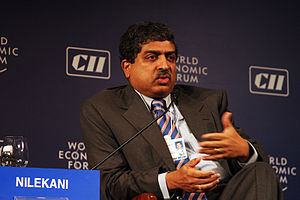MONEYLIFE DIGITAL TEAM | 15/10/2013 05:52 PM |
One person from Kerala enrolled and successfully received two Aadhaar numbers. This raises serious question over the de-duplication theory and practices of UIDAI
Aadhaar or the unique identification (UID) number is being enforced by the governments and the de-facto tagging institution, the Unique Identification
According to a report in Matrubhoomi, a Kerala-based newspaper, PV Narayanan, a resident of Panatthadi panchayat received
As Moneylife has pointed out, both the union government and UIDAI were in such a hurry that they neglected the basic principle of pilot testing and size of sample. For over 1.2 billion UID numbers, they have used data from just 20,000 people, in pairs, as the sample and on the basis of the results, gone ahead with the UID number through the ‘Aadhaar’ project. (How UIDAI goofed up pilot test results to press forward with UID scheme)
The case of Narayanan also mocks the false positive identification rate (FIPR) theory of UIDAI. Earlier, speaking about the FIPR, the UIDAI had said, “We will look at the point where the FPIR (i.e. the possibility that a person is mistaken to be a different person) is 0.0025%”. This means, for every 1 lakh comparisons, there would be two and a half false positives. On a large scale, it means for a population of over 120 crore, there would be 18 lakh crore false positives, or, for every single Indian resident there would be 15,000 false positives! (Click to see the calculations)
The International Biometric Group (IBG) testing also shows that performance can vary drastically within technologies-some fingerprint solutions, for example, had next to no errors during testing, while others rejected nearly 1/3rd of enrolled users. “Most interestingly, the testing shows that over time, many biometric systems are prone to incorrectly rejecting a substantial percentage of users. Verifying a user immediately after enrolment is not highly challenging to biometric systems. However, after six weeks, testing shows that some systems’ error rates increase ten-fold,” said the research, consulting and integration firm, which works closely with the biometric industry. The report is titled “Real-World Performance
Maybe the UIDAI and its registrar have thought the second enrolment of Narayanan from Kerala as false positive and issued another Aadhaar number. Hope the UIDAI chairman would be able to find out ‘original and true’ Narayayan from these two biometric-based Aadhaar numbers!




Leave a Reply